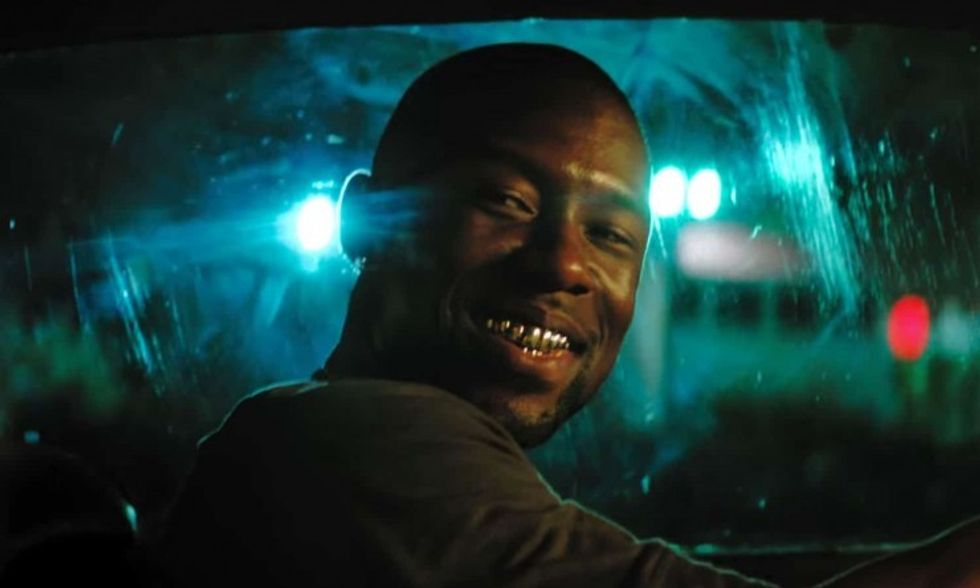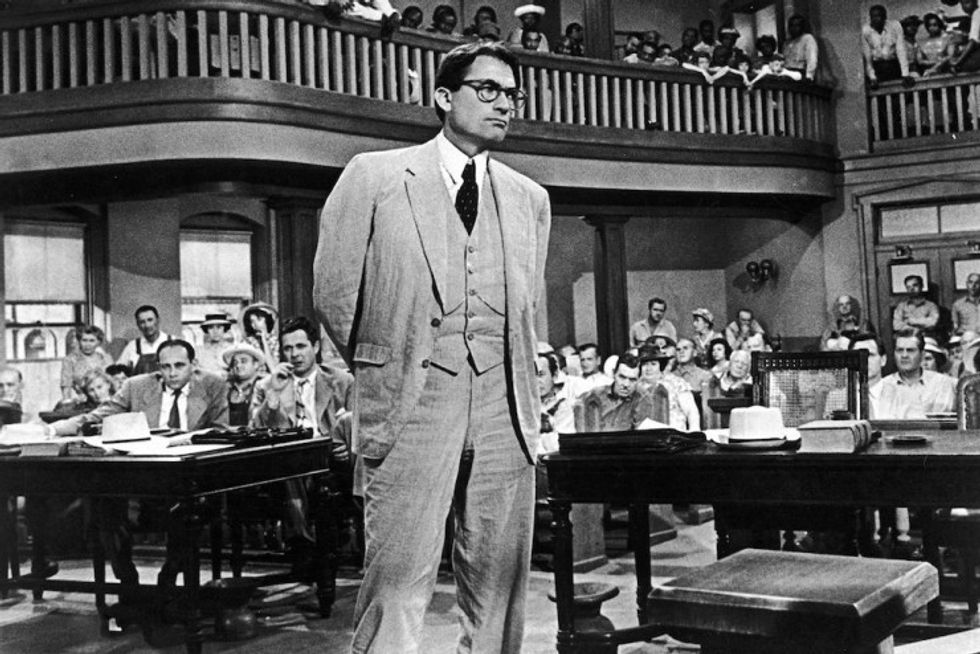What Is a Narrative?
What does "narrative" mean, and why is it essential to filmmakers?

We've all heard the word before, but if I asked you to define "narrative," could you do it? I feel like it has become one of those amorphous things in Hollywood, but narratives have their roots in literary terms and have evolved a lot since the dawn of Tinsel Town.
Today, I want to dive into that evolution and track the term from its origins to where it stands today. Ready to get started?
First, let's define the narrative and then figure out what's a good narrative example.

Narrative Definition
Simply put, a narrative is a story. It can be spoken or written. "Narrative" can also be used as a noun or an adjective.
As a noun, "narrative" refers to the actual story being told. It is a series of events, experiences, people, and details. It also refers to the storytelling process itself.
As an adjective, "narrative" describes the form or style of the story being told. There can be narrative poems, narrative art, narrative essays, or narrative dances. (If you can have something tell a story, it is narrative.)
Narrative Example
Let's say you retell your parents what happened at school earlier in the day. You're telling them a narrative. That's it!
Narrative Format
There are several structural ways to approach narratives.
If you're writing an essay, the narrative format is one introductory paragraph, followed by three body paragraphs, and the last narrative paragraph is the conclusion. This is important to learn. It can help you make a persuasive argument someday. You can find examples of narrative essays here.
What Is a Narrative Story?
Traditionally, a narrative story is a fictional story told by a writer who invents the characters, situations, and plot to entertain an audience.

Literary Narrative Definition
In literature, a narrative is a written story, whether nonfictional or fictional, that details events, people, places, and things.
Literary Narrative Examples
What's your favorite book? If it tells a story, it's a narrative. I'm talking Huckleberry Finn, To Kill a Mockingbird, Election, Where'd You Go Bernadette, Little Fires Everywhere, We Own This City, and even The Berenstain Bears.
If it tells a written story, it is a narrative literary work.

Narrative Film Definition
A narrative film is a movie that tells a fictional story. Commercial narrative films with running times of over an hour are movies. (There are also narrative short films.)
Narrative Film Examples
There is no shortage of examples here, from The Godfather to Paddington 2 and all the way back to A Trip to the Moon and forward again to Mean Girls. Fictional movies are narrative movies. Pick any of your favorites.

What Is Narrative Writing?
To define narrative writing, we have to look at story writing.
Narrative writing is characterized by a main character in a location who encounters a problem, and we follow them as they attempt to fix it by getting themselves into different situations.
What Is the Purpose of Narrative Writing?
Narrative writing is art. Its purpose is to tell a story and entertain the audience as well as communicate a deeper meaning or theme to them.
What Does "Narrative" Mean in Writing?
Narrative Writing Definition
A narrative is a way of presenting connected events in order to tell a story. Whether it's an essay, biography, novel, or TV/movie, the story is what matters the most. Many narratives share the common structure of a beginning, middle, and end.
Narrative writing covers all mediums—film, TV, literature, podcasts, etc. As long as you're telling a story, there's a place for you.

The Four Types of Narrative Writing Examples
1. The Non-linear Narrative
A linear narrative presents the events of the story in the order in which they happened. When it comes to point of view, we can deliver this story via first-person, second-person, or third-person narration, as long as the events of the character’s life unfold in chronological order.
Examples of narrative linearity are books like Pride and Prejudice, movies like Die Hard, and TV shows like Friends (although some episodes may vary).

2. The Non-linear Narrative
A non-linear narrative is a technique where events are portrayed out of chronological order or in the logical order presented in the story. The pattern of events needs to jump around and not follow a linear pattern. A nonlinear narrative can also be known as a disjointed narrative or disrupted narrative.
Examples include movies like Memento, books like Where the Crawdads Sing, and TV shows like LOST.

3. The Quest Narrative
The quest is one of the most popular storylines. It's when we follow a character who's usually traversing unknown territory toward a goal. The pursuit becomes their passion, and they have to face nearly insurmountable obstacles along the way. It might be a journey home, like in The Odyssey, or the quest of Frodo in The Lord of the Rings, or just getting off Gilligan's Island.
Quests are popular crossover narratives, with both linear and non-linear entries.

4. The Viewpoint Narrative
Viewpoint narratives express the personal experience of the main character or other characters in the story. It is greatly concerned with point of view. Viewpoint narrative writing follows the moods and feelings of the narrator's subjective point of view. This style often takes the form of first-person narration or third-person omniscient narration.
Think about movies like Little Children, Sunset Boulevard, and even Shawshank Redemption. Or books like Today Will Be Different and Moby Dick. The points of view in these stories matter and affect how we are given information.

What Is the Purpose of Narrative?
Storytelling is the quintessential human art. We started by sitting around a fire, listening to people talk about the hunt. It began with paintings on walls, and as language formed, the spoken word from people like Homer was passed down to writers, who got those ancient stories on the page. We had things like the Epic of Gilgamesh and even the Bible, recounting tales that gave purpose to our lives.
As literature expanded, so did the narrative. We saw books written about different stories and fantastic places. We saw people invent new genres like horror, epics, science fiction, and even romances. We were treated to indelible characters and even repurposing of classics.
When movies came around, narratives jumped again, this time expanding from the big screen to the small screen in the ride of television. And don't forget the narrative radio stories, which have now evolved into podcasts. The narrative is directly aligned with being human. We live to tell stories. And it will continue to evolve with us as we continue to change as a species.
The best is yet to come.

The Narrative Form
As we have discussed, the narrative can take many forms, from books to movies to TV shows. For a complete list of narrative forms, head over to Wikipedia.
Other narrative forms include:
- Autobiography
- Biography
- Captivity narrative
- Epic
- Epic poem
- Essay
- Fable
- Fantasy
- Flash fiction
- Folk tale
- Historical fiction
- Legend
- Memoir
- Myth
- News
- Nonlinear narrative
- Novel
- Novella
- Parable
- Play
- Poem
- Quest narrative
- Realistic fiction
- Screenplay
- Short story
- Tall tale

What Is Narrative Description?
When you're writing any of the aforementioned types of a narrative, the narrative description is the physical words on the page.
In movies and TV, that's action writing. In books, it's the words on the page. It could be what people read on podcasts or just the most flowery description inside your favorite novel. Words are king.
Summing Up "What Is a Narrative in Movies and TV?
After all this celebration of the narrative form, it's hard not to be excited to read and write the rest of the day. Narratives expose our humanity. They help us understand ourselves and other people. They are windows into new cultures and new identities that may not have been open to us before.
What are some of your favorite narrative ideas and stories?
Let me know in the comments.











